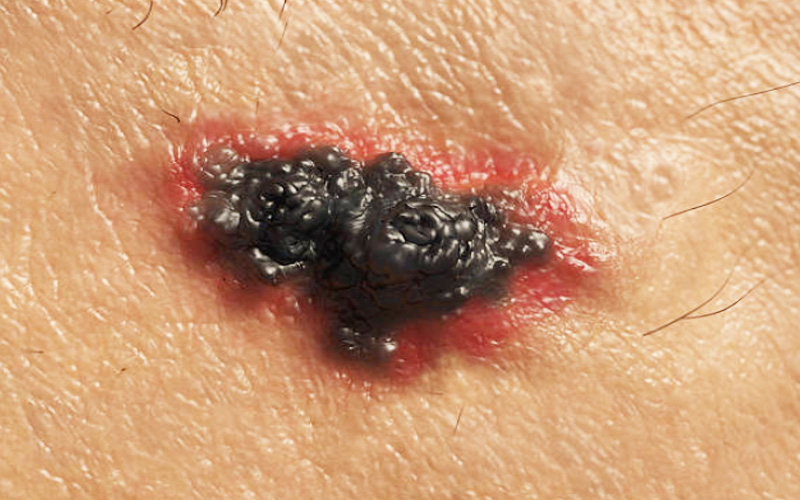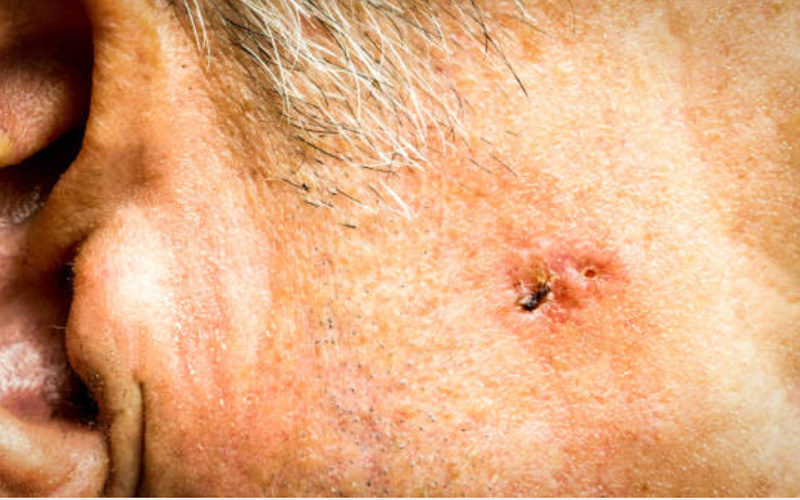Melanoma is a type of skin cancer that occurs when the DNA of melanin-producing cells is damaged. The damage to the DNA of skin cells leads to new cells growing out of control and turning into a mass of cancerous cells.
This can develop on any part of the body, but most often it begins in the skin. It may appear as a raised, brown, or black bump or a flat multicolored patch.
If left untreated, it can also grow into the tissue or dermis. This can lead to the most dangerous form of melanoma.
Several risk factors increase the chances of getting melanoma. Exposure to ultraviolet light is an important factor. This can come from sun lamps and solariums. Doctors recommend avoiding the use of these devices.
People who have a family history of melanoma may also be at higher risk. A weak immune system can also be a risk factor.
Melanoma is most common in areas with high sun exposure, such as the head and neck. However, it is also possible to have melanoma in areas of the body that do not get as much sun. This includes the arms and legs.
There are four main types of melanoma. These include lentigo maligna melanoma, nodular melanoma, superficial spreading melanoma, acral lentiginous melanoma, and amelanotic melanoma.
The other types are mucosal melanoma, melanoma of the eye, and desmoplastic melanoma.
For early detection of melanoma, it’s best to know the various symptoms.
Below are the various symptoms of melanoma skin cancer worth knowing.
8. A Peculiar-Looking Skin Growth
Peculiar-looking skin growth is a common symptom of melanoma. This is caused by damaged skin cells. When the damaged skin cells begin to malfunction; they crowd out the healthy cells and cause damage to the skin and surrounding tissue.
The skin growth can also have jagged edges. It lacks symmetry and each half of it looks different.

7. An Uneven-Colored Lesion
Lesions that are uneven in color may also be a sign of melanoma. This happens because the individual has been exposed to ultraviolet radiation coming from tanning salons and sunlight.
Ultraviolet radiation can damage skin cells. When it does, the pigment that gives color to the skin becomes damaged. This causes uneven lesions to appear on the skin.
6. Worsening Lesions
The worsening of lesions can be brought about by the weakened immune system. Melanoma can compromise the immune system, which is a collection of cells that can recognize and attack abnormal cells.
The disease-fighting categories of the system are lymphocytes, neutrophils, and monocytes. The immune system can be affected indirectly, such as by radiation therapy, or directly, by destroying the genetic material of cancer cells.

5. Non-Healing Sores
Infection can slow down the healing process. When an infected sore is left untreated, it can spread to the surrounding areas, causing discomfort and pain. The body uses its immune system to fight the infection.
Since the immune system is compromised by melanoma, the body is unable to heal the sores. Exposure to ultraviolet radiation can also cause non-healing sores.
(continued next page)
